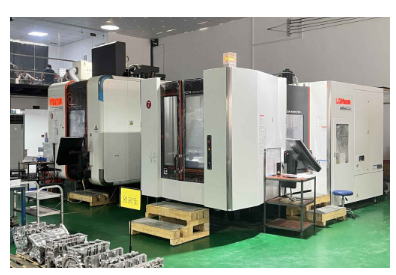The prototype is the most important stage in the development route of car parts through the concept design to production at full range. This enables them to test, tweak and verify components prior to spending a lot of money on mass-produced parts. The result is a much faster auto parts development cycle— so only the best (optimized) auto products are introduced in the market.
Quick Testing with Immediate Feedback
In Ableitungen werden Autoschnitte verpixelter gezeichnet. Manufacturers can use 3D printing, CNC machining, rapid casting and other methodologies to rapidly create functional prototypes, which can then be subjected to rigorous physical and programmatic testing. This rapid test capability makes it possible to find & fix design errors early in the development processto minimize expensive last minute corrections. This otherwise can lead to detecting 30-50% of possible operational failures well before making it to production in a typical prototype test phase.
Improving Design Accuracy and Precision
Therefore, the automotive prototype is especially important in enhancing the auto parts within the accurate and precision level. Designers can easily hit tolerances to ±0.005 inches with precise prototyping, a necessity for demanding high-performance automotive applications. This level of precision guarantees that parts fit and work as well as they can be in an operational setting. Manufacturers can also eliminate discrepancies that prompt reworks in the mass production phase by correcting these elements in the prototyping level.

Cost-effective material and process selection
You can prototype your design at a fraction of the cost of full-scale production to see how your design benefits, or fails, to account for the characteristics of the materials and manufacturing process you intend to use. The following are some of the materials that manufacturers can consider to test which kind of material performs best for particular types of auto parts in terms of quality, durability and economical option. Such experimentation can lead to substantial cost savings; selecting the proper material or manufacturing process can reduce the total cost of production by 20—40%.
Shortening Time to Market
Among its advantages, prototyping is fundamental to the reduced time to market new auto parts. Prototyping can decrease the product lifecycle by weeks if not months by making the development process more inline from design to testing. It needs to be fast, because in this arena market, though automotive, innovation determines so much of the market leadership. In theory, businesses capable of iterating from a concept to production will gain a significant edge, and can actually boost market share within their sector by 5-10%.
Enabling Customization And Innovation
The automotive industry benefits from the customisation and innovation of components during the prototyping stage. The ability to customize a component to a particular vehicle or customer requirement is made possible through auto parts prototyping and this flexibilities come without the commitment to a large-scale production. Such flexibility is especially critical in the luxury and performance car segments, where personalization can be a major selling point.
So, the bottom line is that auto parts prototyping has a huge role in expediting the development of car parts. It accelerates the design and production, at the same time optimizes the quality, functionality and ‘marketisation’ of the auto spares. Moving forward, prototyping will not only remain an essential innovation blanket but also an indispensable tool for any manufacturer that needs to anticipate and adapt to any seismic changes in the automotive world.